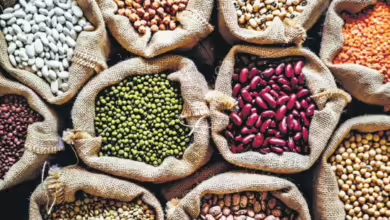Honoring a “trouble-maker”
There’s not a naked picture. Kishore Singh, the director of exhibits and publishing at Delhi Art Gallery (DAG), points out the “unclothed body” during a tour of the second retrospective of India’s trailblazing feminist painter, “Gogi Saroj Pal: Mythic Femininities.” According to him, Gogi did not care about clothes or nudity, even if they are markers of class, area, age, and other variables. “The topic is neither ‘nudity’ or ‘clothes’. Singh tells TMS, “The ‘woman’, her story, and the underlying philosophy of empowerment is.”

In honor of the painter who passed away in January, an ongoing exhibition showcases paintings and life-size sculptures of nude female figures, including bodily contortions, monks, animals, and hybrid beings. The National Award-winning artist’s anti-patriarchal undertones and pro-empowerment position are evident in every shot. “The complexity of femininity is the subject of her work, which explores how feminine identity is reflected in dress, hairstyles, physical body form, pride, humiliation, power, authority, and agency. Long before it was standard procedure, she questioned gender representation conventions, according to DAG CEO and MD Ashish Anand.
DAG’s Kishore Singh
Inequalities and equality
Gogi was born in 1945 to a Himachali family with Lahore roots in Neoli, Uttar Pradesh. Her father was a freedom fighter who was imprisoned and subjected to torture in British India. Gogi’s longtime buddy Singh believes that Gogi may have absorbed “this family history of strength” and become a fierce rebel as a result. But Prem Devi, her grandmother, was the one who inspired her the most. “She had a great impact on the artist and consistently advised her to defend her rights,” Singh continues. “Gogi refers to herself as a ‘troublemaker’ since she refused to be teased by boys during her school years.” She refused to put up with any crap from others, regardless of their gender or age.
During her early years, Gogi spent a lot of time in Kangra, where Prem Devi was the principal of a school. She was there when Tibetan refugees—particularly monks—migrated to Dharamshala in the late 1950s. As a result, she used monastic images into her works, such as the “Human Landscape” and the “Young Monks” series. However, the investigation of relational inequity has always been the main subject of her works. Singh claims that during her time in Kangra, she saw how parents would send their kids to monasteries as a way of showing their Buddhist devotion. But no one ever gets the kid’s perspective on the subject. Thus, Gogi’s concerns are both feminist and very humanistic, he claims.
Gogi attended Banasthali Vidyapith in Rajasthan in the 1960s to pursue a bachelor’s degree in painting before moving to Lucknow to complete a diploma program. She moved to Delhi at the end of the 1960s, when she created a style that, according to Singh, was “distinctively born out of her own life experiences and the inequalities she had seen in her life,” rather than being influenced by any other well-known artist.
“Paper Boats: A Dream Vision” (1992)
Making a Trace
After being harassed by men in the streets of Anarkali Bazaar in Lahore for taking off her chaddar on a hot day while wearing her sari, her grandma decided to give up wearing chaddar completely. For Gogi, this act of defiance had a lifelong effect. She continued to paint series that are harsh indictments of patriarchal society, such as “Being A Woman,” “Mandi,” and “Halley’s Comet.” In “Mandi,” for example, a group of women semi-clad in vivid silhouettes return the stare piercingly, as if contradicting the viewers’ attention. This work addresses the masculine gaze. The paintings in “Halley’s Comet” are a critique of superstition. Reoccurring every 75 years, the comet is said to wreak havoc on pregnant women’s health, especially those bearing male offspring. “A woman was subjugated by the comet superstition because she would do everything during that time to protect and improve her child.” Therefore, Gogi questioned such retrograde notions when individuals choose to dictate to women at their most vulnerable moments in life, according to Singh.
Gogi also creates powerful portraits. Her “Nayika” and “Hathyogini-Kali” series include monochromatic images of women with confident stances and expressive eyes. “A woman’s longing is expressed in Gogi’s Nayikas. Her lady is self-centered; she doesn’t depend on others to make her happy; she makes herself happy. They are adoring themselves rather than the audience, Singh claims.
An altruist
Singh remembers Gogi’s assertion that animals had the same agency as people. Hindu mythology describes the Kamdhenu as a wish-fulfilling cow that provides food for everyone. She is portrayed by Gogi as a hybrid monster with a cow’s trunk and a female’s body. She uses a comparison between women and cows to highlight how, regardless of their preferences, both are seen as fitting the position of the “nurturer.” Each of them has been given a role. Singh notes that no one ever asks what they need.
Similar to this, Gogi depicts a female’s torso with hands decorated with alta (dye) beside a horse’s trunk in another hybrid series called “Dancing Horse.” In northern India, horses are taught how to dance during weddings. He continues, “Gogi hated the concept of taming animals to appease humans. Her work focused on giving the most marginalized members of society agency and freedom. “Everyone else is making decisions for the cow, the horse, the children in Kangra’s monasteries, the bird-like creature Kinnari, and women.” With her thought-provoking pieces, Gogi attempts to influence the conversation and draw our attention to that, he claims.







